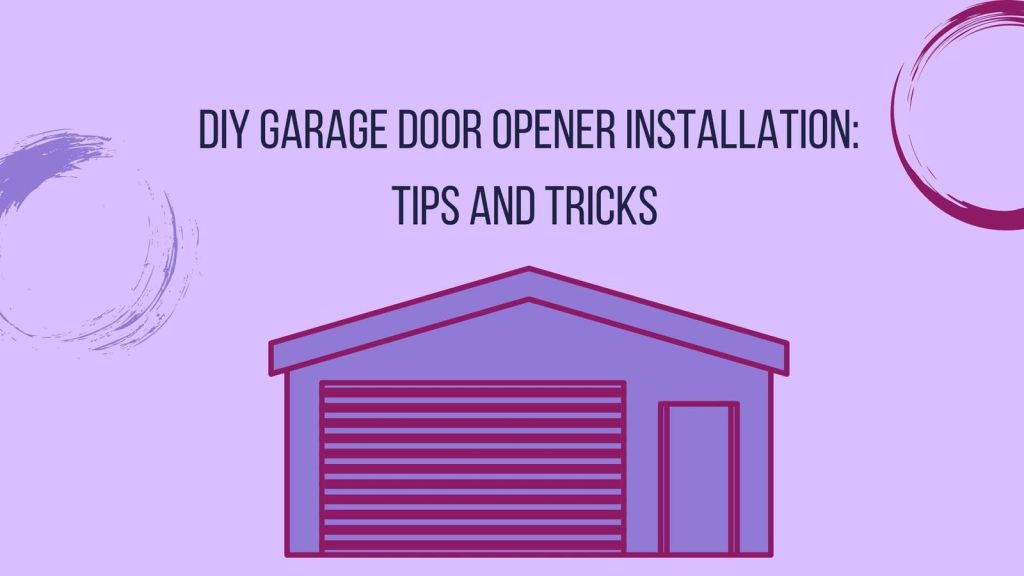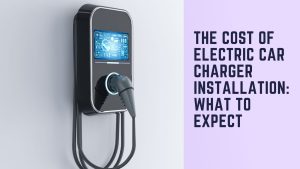In this guide, you will be able to read about the advantages of DIY garage door opener installation on your own, how to select the proper opener, the process of installation, all the stages, and useful information about different problems you may face.
Benefits of DIY installation
There are many benefits for you when you decide to install a garage door opener on your own.
Cost savings: The most obvious reason to consider DIY garage door opener installation is to save some money. This way, you will be able to cut down on the extra costs that come with hiring professionals to install the project. This can often save you between $100 and $300, depending on its difficulty and the rates in your locality.
Learning experience: Another advantage is the practical experience of learning one gets. Benefits of having a garage door opener include: you get to know how your garage door system works; when you need to repair it in the future, you will already know how to do it. It also allows you to appreciate the fact that you yourself finished the project on your own.
Customization: Another advantage of doing it on your own is that you are in charge of the whole process of installation. This makes it possible to opt for the kind of garage door opener that will suit your needs.
Choosing the right garage door opener
First of all, to avoid making mistakes, it is necessary to choose the right garage door opener correctly before the beginning of the installation.
Drive type: The types of garage door openers available on the market today differ in the type of motors as well: chain, belt, and screws. Belt-drive models are less noisy and vibration-free, which makes them a good choice for garage door openers. There is no frequent need for maintenance as with screw-drive openers, but they can work poorly in low or high temperatures.
Horsepower: The lifting power of a garage door opener depends on the horsepower (HP) rating of the opener. For single-door openers, 1/2 horsepower is typically adequate. For powerful ones such as the heavy and double doors, ensure that you take 3/4 HP or even higher.
Smart features: Contemporary garage door openers include connectivity to Wi-Fi or applications of some sort, the ability to operate via a remote control, any other device in distant areas, or even an artificial intelligence (AI) companion like Alexa or Google Assistant.
Safety and security: Search for safety options; the door should not close on an object in front of it; in such cases, an option such as auto-reverse is desirable. Also, by applying the rolling code technology, one can avoid unauthorized access since the code of the remote changes each time it is used.
Step-by-step DIY installation guide
On the other hand, after choosing a worthy garage door opener, just follow the following steps to get started with garage door opener assembly:
Preparation: The process should be started with careful reading of the manufacturer’s guidelines in its manual. Enlist all the necessary tools, as they are very vital in the course of working, and these include the ladder, drill, screwdrivers, wrenches, and a tape measure. Make sure that your garage door is operational and well-balanced. This is because when your door is unbalanced, it puts a lot of strain on the opener.
Assemble the opener: First of all, mount the garage door opener as a device as it is recommended by the manufacturer. This normally entails the joining of the rail sections, the fixing of the trolley, and the encasement of the motor unit.
Install the rail and motor: Fix the rail above the garage door at the proper distance from the header bracket to attach it. The motor unit should be mounted on the ceiling by means of a mounting bracket and lag screws. Ensure that the motor is centrally positioned in relation to the door.
Attach the trolley and arm: The trolley has connections to the door through the door arm. Join the arm to the trolley and, finally, the garage door. It is also important to make sure that the arm part is set accurately and firmly so as to reduce operational problems.
Install the safety sensors: Most safety sensors are usually placed on either side of the garage door at a level close to ground level. These sensors are very vital, as they help prevent the door from closing if there is an object in front of it. Install the sensors, wire the segment to the motor unit, and connect it as the manual instructs.
Wire the controls: In most cases, there is a control panel mounted on the garage wall along with remote control gadgets. Fix the control panel within a comfortable working range indoors, preferably in the garage, and connect the wiring to the motor. Follow the steps for pairing the remote controls with the opener.
Test the opener: After this, you should try the garage door opener to ensure that everything is working as it is supposed to. The door should not move roughly back and forth, and there should be no delay as well. If necessary, or for tighter control, adjust the travel limits and force settings to their perfect settings.
Common challenges and solutions
Here are some DIY tips for garage doors common issues and how to address them: Here are some common issues and how to address them:
Misaligned safety sensors: If your garage door lowers, then rebounds, or simply does not shut, there is a good chance that the safety sensors need realignment. Check the position of the sensors and make sure that their lamps are on and steady.
Door doesn’t close fully: If for some reason the door does not shut completely, it is advisable to adjust the travel limits on the opener. This can often be accomplished by means of adjustment screws provided on the motor unit of the instrument.
Excessive noise: You may find that your garage door opener is very noisy. You should tend to lubricate the movable parts, including the chain, rollers, and hinges. However, sometimes the noise might be caused by some of the bolts being loose or any of the parts being worn out.
Interference with remote controls: Interference may also be the reason if your remote controls are not on the same wavelength. Make sure the antenna on the motor unit is in the proper position and not folded over. Also, look for possible sources of interference, if any, like LED lights, and get them changed in case they are the source of interference.
Garage door opener installation is a doable project that has many benefits. By following a structured guide, you will be able to install it and automatically open your door. There are some usual problems that are always expected, and remember to always use manuals for guidance or seek assistance in case of difficulty.
If you’re also considering how to approach other home improvement projects, you might find it useful to read our comparison of DIY vs. professional home security installation to determine the best option for your needs.






